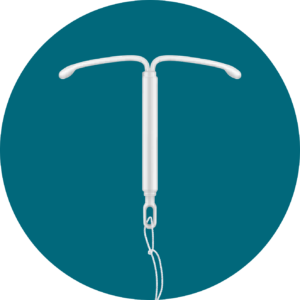The Mirena IUD: Benefits, Risks, and the Latest Updates
The Mirena intrauterine device (IUD) is one of the most effective long-acting reversible contraceptives (LARC) available today. Recently, the Therapeutic Goods Administration (TGA) extended its approved use to eight years, further increasing its appeal as a reliable contraceptive. However, recent studies have also raised concerns about potential health risks, including a possible link to breast cancer.

What is the Mirena IUD?
The Mirena IUD is a small, T-shaped device inserted into the uterus. It releases levonorgestrel, a synthetic version of progesterone, to prevent pregnancy. Unlike copper IUDs, which use copper ions to create a sperm-hostile environment, Mirena’s hormonal mechanism thins the uterine lining and thickens cervical mucus, reducing the chances of fertilisation.
In addition to preventing pregnancy, the Mirena is popular for its non-contraceptive benefits, such as reducing menstrual pain and controlling heavy bleeding.
Extending Mirena’s Contraceptive Lifespan: Now Approved for Eight Years
A recent TGA-approved update has extended the lifespan of the Mirena from five to eight years. Healthcare professionals, such as Dr Sara Whitburn from the RACGP, have welcomed this development and emphasised that the longer use period improves both convenience and cost-efficiency for users.
The ability to provide eight years of contraception without requiring frequent replacements enhances Mirena’s value, especially in comparison to oral contraceptives that require daily adherence. Additionally, it offers menstrual control and pain relief over the same extended period. This extended efficacy could help increase uptake, especially in Australia, where LARC use remains relatively low compared to other countries.
Assessing the Risks: The Breast Cancer Link
A recent study from Denmark suggested a potential link between hormonal IUDs, like Mirena, and an increased risk of breast cancer. Researchers tracked nearly 80,000 users of hormonal IUDs over two decades and compared them to non-users. They found a 30-80% relative increase in breast cancer risk, depending on how long the IUD was used. However, these numbers can seem more alarming than they are when not viewed in context.
The absolute risk increase reported in the study is modest:
- 14 extra cases of breast cancer per 10,000 women after five years of use
- 29 extra cases after 5-10 years
- 71 extra cases after 10-15 years
These absolute increases remain well under 1% of IUD users. The Danish study also faced challenges in fully adjusting for factors like body weight, alcohol consumption, smoking, and physical activity—all known to affect breast cancer risk. Therefore, whether the IUDs are responsible for the increased risk is uncertain.
A Swedish study involving more than half a million hormonal IUD users reported only a 13% relative increase in breast cancer risk, equating to 1.46 additional cases per 10,000 women per year. Importantly, the study also found that IUD users had a reduced risk of cervical, ovarian, and endometrial cancers, which mirrors the protective effects seen with contraceptive pills.
Mirena vs. The Pill: How Do the Risks Compare?
Although the media coverage of the Danish study raised concerns about IUD-related risks, it’s essential to note that these risks are comparable to those associated with other hormonal contraceptives, such as birth control pills. Both the Mirena IUD and oral contraceptives slightly increase breast cancer risk while simultaneously lowering the risk of other cancers.
Ultimately, the risk-benefit profile of the Mirena is comparable to that of the pill. However, the Mirena offers significant advantages in terms of convenience and effectiveness, as users do not need to remember to take it daily or renew it monthly.
The Importance of Informed Choice in Contraceptive Counselling
Despite its benefits, LARC options like Mirena are underused in Australia, with only 10.8% of women aged 15-44 using one. One reason is that general practitioners (GPs) often default to discussing the pill during contraceptive consultations.
Better education and training for healthcare providers, combined with increased government support, could help promote LARC use by expanding access to clinics and professionals qualified to insert them.
The ability to offer eight years of contraception without frequent follow-ups adds another layer of appeal, especially for women seeking cost-effective and low-maintenance contraceptive solutions.
Key Benefits of the Mirena IUD
Highly effective: With a 99% efficacy rate, Mirena is one of the most reliable contraceptives available.
- Long-lasting: Now approved for up to eight years of contraceptive use.
- Non-contraceptive benefits: It reduces period pain and heavy bleeding, improving the quality of life for many women.
- Convenience: Unlike pills or monthly injections, Mirena requires no daily maintenance.
- Reversible: Fertility returns quickly after removal, making it a good option for women planning future pregnancies.
Is the Mirena IUD Right for You?
The decision to use the Mirena IUD should be made based on an individual’s medical history, lifestyle, and personal preferences. While recent studies have highlighted a potential, albeit small, link to breast cancer, it is important to view this risk in the broader context of overall health and other contraceptive options.
For women already using the Mirena or considering it, it is helpful to remember:
- The absolute risk of breast cancer remains low.
- Mirena’s benefits in terms of period control, convenience, and contraceptive efficacy often outweigh the risks.
- For most women, the risk of breast cancer is influenced more by lifestyle factors (like weight, smoking, and alcohol) than by their choice of contraception.
If you are concerned about the risks, it is essential to consult your GP or discuss the matter with Dr Kelly Hankins to further explore your contraceptive options and receive personalised advice.
By promoting informed discussions and increasing access to trained professionals for IUD insertion, Australia can further increase the uptake of LARCs, helping women make choices that best suit their health and lifestyle.